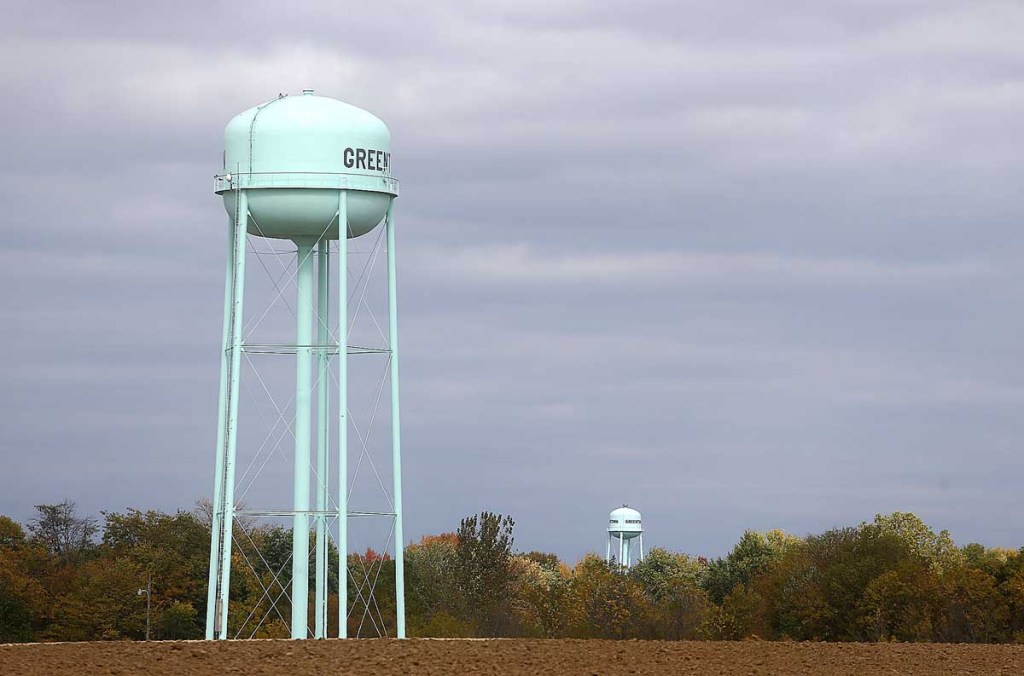Scientists say chemicals from fracking wastewater can taint fresh water nearby
Published 7:00 am Thursday, May 12, 2016

- Greentown raised its wastewater rates 81 percent in 2013 and then this year increased its water rates by 56 percent.
The boom in the unconventional natural-gas drilling method known as fracking hit so fast that scientists have had to scramble to determine whether it is safe for humans and the environment. Mostly they are still trying to catch up.
But a study by the U.S. Geological Survey appears to have answered a critical question about the millions of gallons of chemical-laced water that are injected into the wells to fracture rocks and release trapped gas. Is there any cause for concern when that water is stored later, whether in treatment facilities or special underground wells?
The short answer is yes, said the study’s lead author, Denise Akob, a USGS microbiologist. “The key takeaway is really that we’re demonstrating that facilities like this can have an environmental impact.”
Akob headed a team of researchers from Duke University and the University of Missouri in studying a stream near a wastewater storage site in Lochgelly, W.Va. Upstream from the site, the waters of Wolf Creek tested normal. Downstream, there were detectable levels of chemicals that commonly lace fracking waste – barium, bromide, calcium, chloride, sodium, lithium, strontium.
The report called the levels low, not enough to have a noticeable impact on marine life. But communities of microbes that help support life were dramatically altered and less diverse downstream.
“Water samples adjacent to and downstream from the disposal facility exhibited evidence of endocrine disruption activity compared to upstream samples,” the USGS explained in a statement announcing the study.
Such activity can wreak havoc on the hormones of mammals. In the Chesapeake Bay watershed, which includes bays, rivers, streams and creeks in six states and the District, scientists have determined that endocrine disrupters have switched the testes of male smallmouth bass to ovaries.
Identifying the altered water chemistry “is a first,” Akob said, and the microbe finding “gives us a sense that the communities are changing downstream.” How exactly they do not yet know; science works slowly, and in this case it will probably take more years of research.
Hydraulic fracturing is rife in West Virginia, producing hundreds of millions of gallons of wastewater. Pennsylvania is another state where fracking abounds, with wells being built to drill vertically a few hundred feet, then horizontally so that water can be injected into the hole to break apart shale and release gas. The practice is also widespread in Ohio, Texas, Wyoming, Oklahoma, North Dakota and other states.
Scientists from across a range of federal agencies and universities are concerned about the chemical mixtures used to open the rock as well as the chemicals naturally trapped underground that now come to the surface. Oil and gas companies have refused to reveal the mixtures they use, saying the information is proprietary. In response, Maryland, New York, New Jersey and numerous other states have either placed a moratorium on fracking or banned it.
On its website, the Environmental Protection Agency lays out its concerns. Unconventional oil and gas extraction “can be generated in large quantities and contain constituents that are potentially harmful to human health and the environment,” it says. The wastewater often contains high concentrations of salt, as well as “various organic chemicals, inorganic chemicals, metals, and naturally occurring radioactive materials. This potentially harmful wastewater creates a need for appropriate wastewater management infrastructure and practices.”
Oil companies often truck water to public and private wastewater treatment facilities to manage the problem. In Oklahoma, the wastewater is sometimes poured into underground storage wells, a practice thought by many to produce small earthquakes.
At the West Virginia site, Akob and her researchers did not know where leaks might have occurred. They also found elevated levels of iron considered unsafe by West Virginia regulators, but that problem could not be blamed on the wastewater because mine excavations in the state have raised iron levels in many locations.
“The main thing is, there are aquatic health guidelines for a single element,” Akob said. But the complex chemical mixtures produced by fracking “can have different responses.”





